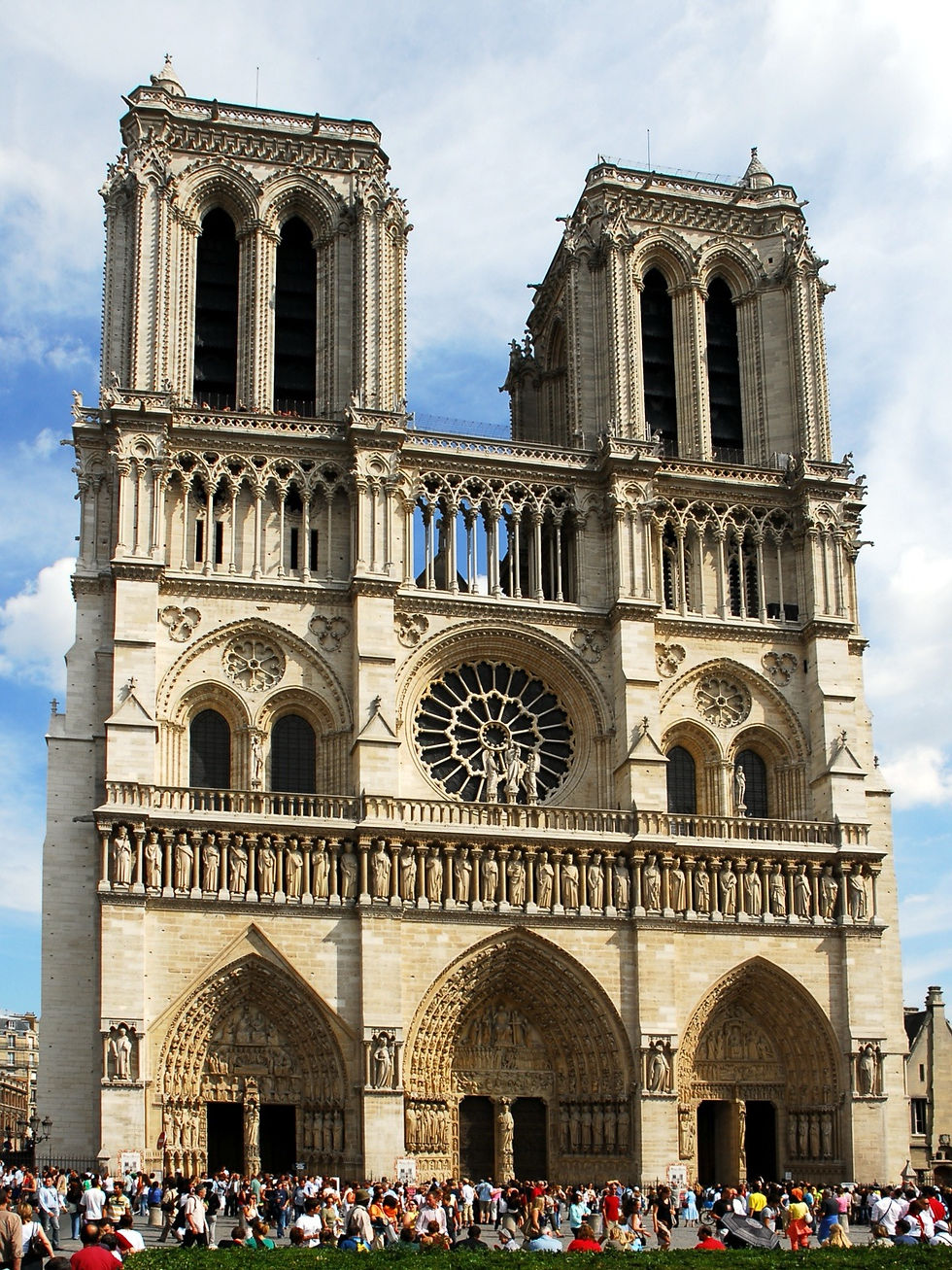Three Churches and Satan’s Seat
- Dr. Nathan T. Morton

- Feb 6, 2022
- 3 min read
Updated: Feb 8, 2022
So today we were turned away from 3 churches and the altar of Satan. (Yes, I see the irony.) We started the morning hoping to worship at the Berlin Cathedral which is the most impressive Protestant church in Berlin. But, due to Covid restrictions limiting occupancy only regular parishioners were allowed inside. We then attempted to worship at St. Mary’s Evangelical as well as St. Nicholas’ Reformed with the same results. I'm glad to day the long unproductive walk through the cold rainy weather didn’t dampen our spirits.
Choosing to accept the detours as part of God’s plan we grabbed coffee and sat down to map out a new strategy for the day. February 6 is museum day in Berlin, so all museums were free, and the churches from which we were denied worship, also functioned as museums allowing tourist in the afternoon. So, after a good lunch in the TV tower, we began anew.
First, we toured St. Nicholas’ Church. (Pictures Here) This is the oldest church in Berlin having been built between 1220 and 1230. It was originally a Roman Catholic church but converted to Lutheranism during the Protestant Reformation.
It is known for three of its ministers.
In the 17th century prominent hymn-writer Paul Gerhardt was its minister. He is probably best known for his hymn, “O Sacred Head Now Wounded.” At the same time composer Johann Crueger served as the musical director and wrote the music for many of Gerhardt’s hymns. The third minister, Lutheran theologian Provost Philipp Jacob Spener, served from 1691 to 1705 and is credited as being the father of German Pietism. Spener was loosely connected to Count von Zinzendorf, the leader of the Moravian Brethren's Community at Herrnhut in Saxony.
Then it was a short walk to the Berlin Cathedral. (Pictures Here) This was the church from which we were turned away from first, and it is by far the most elaborate church I have ever seen. Although a protestant church, its ornate interior and exterior, causes it too often be mistaken as Roman Catholic.
The most exhilarating part of this tour was the 270 steps up to the outside walkway around the primary dome and then 270 back down. It would have probably been easier if we hadn’t already walked ten miles.
The current building is the last of many church/chapel structures built on this same location. After the Brandenburg elector Joachim II had rooted the Dominicans from their medieval brick church on this spot, he started upgrading the building so that it would serve as both a cathedral and the royal burial grounds of Prussian Royalty. That building was finished in 1535.
Then in 1750 Frederick had Joachim II’s building replaced with a different structure in order to mirror the growing importance of the Kingdom of Prussia. That building was a businesslike structure and it stood exactly where the contemporary cathedral now stands.
When Germany finally became a national state, Berlin wanted a large church comparable to the other European capitals. (St. Peter in Rome, Notre Dame in Paris or St. Pauls in London) The design was created in 1885 and it took until 1905 for the current cathedral was opened in 1905.
After Berlin’s Cathedral we headed to the Pergamum Museum .5 miles away to see the Seat of Satan. Actually, it is the altar of Zeus from Pergamum but it is often called the seat or throne of Satan due to a reference in the book of Revelation.'I know where you dwell, where Satan's throne is; and you hold fast My name and did not deny My faith even in the days of Antipas, my witness, my faithful one, who was killed among you, where Satan dwells.’ (Rev. 2:13)
This incredibly famous altar could easily be called the epicenter of ancient pagan worship. It was constructed in Pergamon in the second century BC. A once culturally rich city, Pergamon fell into ruin after an economic slump made it a prime target for invaders.

However, the Altar was rediscovered in the 1870s by German engineer Carl Humann, who at the time was working on road construction in Turkey. Concerned that his finds would become the prey of locals using the area as a stone quarry, he decided to live among the ruins of the city for a short while. In September of 1878, the financiers behind Berlin’s museums purchased the altar for 20,000 marks, primarily because it was believed that left in its current state at the time it would have been destroyed.
Sadly we were not able to get into the Pergamum Museum today but it is on our plan for Wednesday. By the day’s end we had walked a little over 13 miles in addition to the 540 steps inside the Berlin Cathedral. It was a tiring but wonderful day of seeing history and learning from the past.





















Comments